As a 930 million-strong network of professionals, LinkedIn isn't just job-seeker central.
It is a powerful platform that allows you to promote your business, keep up-to-date on industry trends, expand your peer network, and make connections that can result in new opportunities.
More importantly, it's a direct hotline to their dream clients. LinkedIn provides an organic way to connect with engaged audiences, a rarity in today's digital marketing environment. But finding meaningful connections and then nurturing them to the point of conversion can be a daunting task.
Whether you're a professional or a business, building a strong LinkedIn following is essential for networking, brand visibility, and thought leadership.
In this article, we explore eight strategies you can use to boost your LinkedIn presence and build yourself an engaged audience.
Skip to:
- Understanding Your Audience
- Optimizing Your Profile
- Content is King
- Engage with Comments, Posts, and Trending Conversations
- Cross-Promotion and LinkedIn Ads
- Group Engagement and Collaboration with Influencers
- Host Webinars and Events
- Consistency is Key
1. How to Get More LinkedIn Followers by Understanding Your Audience
Social media platforms make it easy to mistake vanity metrics like views and likes for the real deal — the number of Ideal Customer Persona (ICP) matches you've managed to connect with.
Between a LinkedIn profile with a hundred connections of which three fit the ICP and another with only five connections, all of which are ICP matches, the second is still the more successful one.
The need for defining your target audience is self-explanatory.
Your profile and the content you create have to be geared towards only those people who can turn into paying customers.
Those who need what you're offering, love it enough to buy from you again, and recommend it to others.
To create your Ideal Customer or Buyer Profile, start by defining
- What they do
- Where they live
- How much they make
- What are their challenges, interests, and preferences
and then use these criteria to address their pain points.
The level of detail needed will differ from industry to industry. Once you've set down the parameters for each criterion, you can manually look for your ICP or use LinkedIn Sales Navigator to find them.
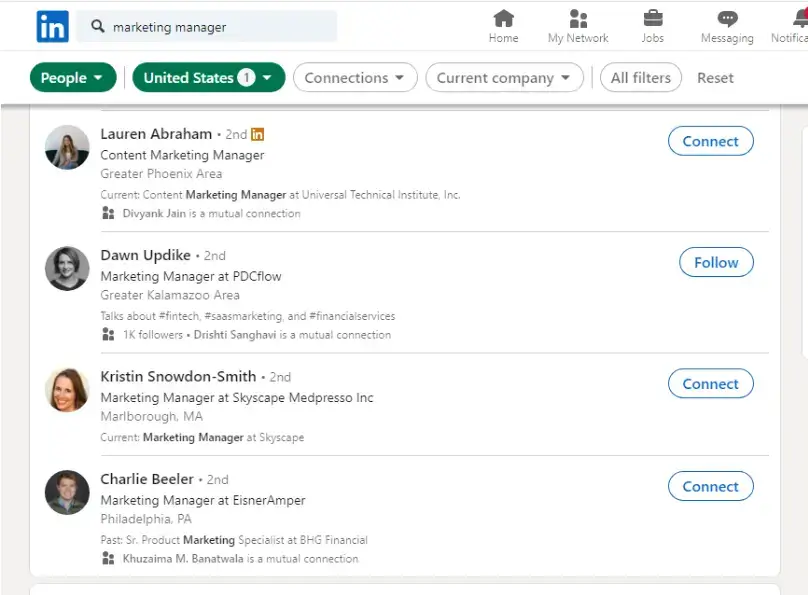
2. Optimize Your Profile to Attract More Followers on LinkedIn
Your LinkedIn profile doubles up as your calling card, your website, and your product brochure, all rolled into one. Proper LinkedIn management ensures your profile stands out and achieves its full potential.
To optimize your LinkedIn profile for more followers, follow these steps:
- Use a high-quality professional headshot that you can create using a professional headshot generator tool like BetterPic.
- The first thing they'll notice is your profile photo, followed by the headline.
- Use a professional headshot with an unobtrusive background, and use your cover photo to highlight the services you provide, promote a product, or add social proof.
- Craft a compelling, keyword-rich headline.
- Your headline should explain what you do and for whom. For example, Principal Architect at XYZ Developers or Owner at ABC Hardware.
- Write a clear, engaging summary that highlights your skills.
- The summary narrates the mission of your business and what sets you apart from competitors.
- Highlight achievements, projects, and endorsements, but always keep the spotlight on the results you've achieved for clients.
If there’s a lot of information to fit in, break it into chunks to make it more readable.
Remember: people buy from people they like.
The goal of your LinkedIn profile is to make you come across as likable and trustworthy. You can do that by making your overall profile feel personal and relatable.
If you’re in an industry that requires a more enterprise-level image, you’ll have to maintain a formal tone.
- Include relevant keywords throughout your profile.
-
- Include a link to your company or business page on LinkedIn. If you don’t have one, you can link to your business website instead, along with basic contact information.
5. Add work experience with detailed descriptions.
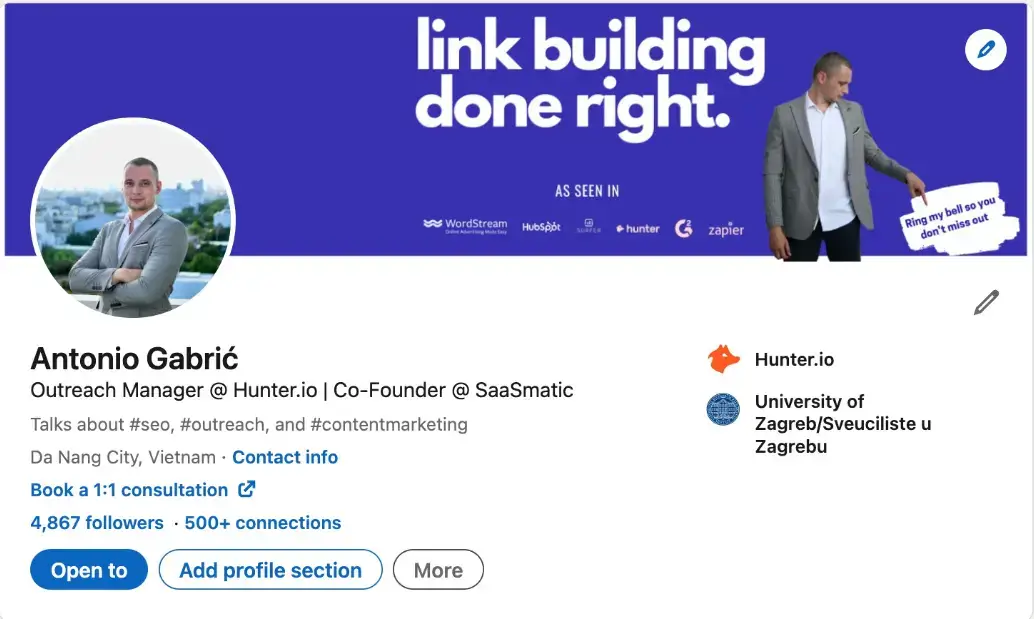
List your products or services and use benefit-driven language to appeal to potential customers. Strengthen credibility by displaying feedback from happy customers.
Video testimonials where clients mention are also quite impactful, with 77% of customers saying they were motivated to make a purchase after watching them.
3. Why Consistent Content Helps You Gain More Followers
Enrich your LinkedIn content by making it
- Easy to follow. Use short paragraphs and keep reading difficulty at Grade 9 level or lower.
- Credible. Cite research and examples to prove the validity of points.
- Actionable. Include takeaways and tips to provide value.
- Interesting. Remove filler text and vary sentence length.
Stay updated on the latest business news, trends, and opinions.
Capitalize on micro trends and benefit from the increased visibility that posting on trending topics provides.
But moment marketing in itself is not enough to sustain information-hungry audiences. Post on evergreen topics that ICPs in various stages of the sales funnel are interested in knowing.
Follow other content creators and make a list of the pain points they address in popular posts. Address those challenges and offer your own spin on how to solve them.
Experiment with formats. Weave in and out of content styles like short posts, detailed run-downs, case studies, video tutorials, podcasts, carousels, etc., and repurpose content to make the most of each topic.
Read more about creating viral content.
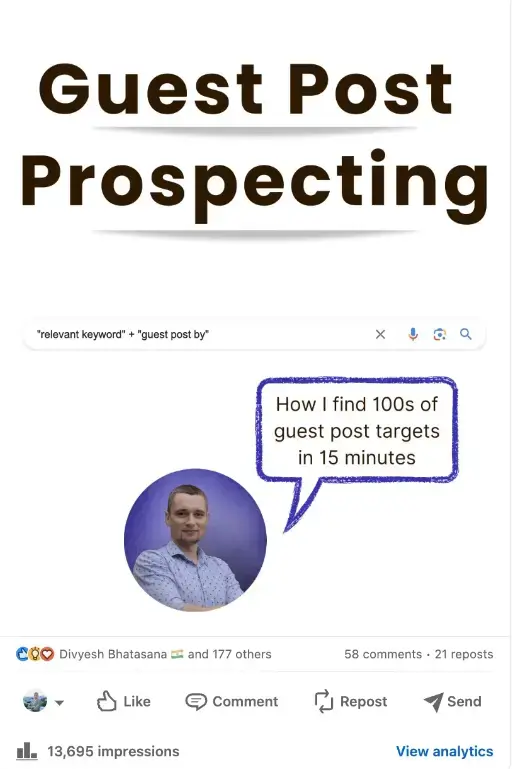
Increase engagement by ending your content with a question or an invitation for opinions. LinkedIn also provides useful data points to let you gauge how your content performed.
When you click on the number of views on a post, the graph icon will show you the job title of the viewers, the company they work for, and their location.
You can use this data to determine if you’re on the right track or if your content needs to be refined for it to attract more accounts resembling your ICP.
4. How to Get More LinkedIn Followers by Engaging with Your Audience
According to social media statistics, there is a 50% rise in engagement year-over-year on LinkedIn. That said, posting alone isn’t enough to drive engagement.
If you want to encourage conversation and foster relationship-building, you’ll have to participate in conversations with other LinkedIn users.
Set aside 10 to 20 minutes every day solely for the purpose of engaging with connections.
Actively follow and comment on posts pertaining to your industry or profession, whether they’re by a peer or a prospect. Ask follow-up questions, or offer advice based on your experience.
If someone leaves a comment on your post, promptly respond to them.
Even if a potential client isn’t directly engaging with you, they’re still going to read your interactions with others and decide if they want to work with you.
The other benefit is that the more people you have conversations with, the more feeds you’ll show up on, even those of people who don’t follow you on LinkedIn.
It’s an excellent tactic to expand reach and build brand awareness.
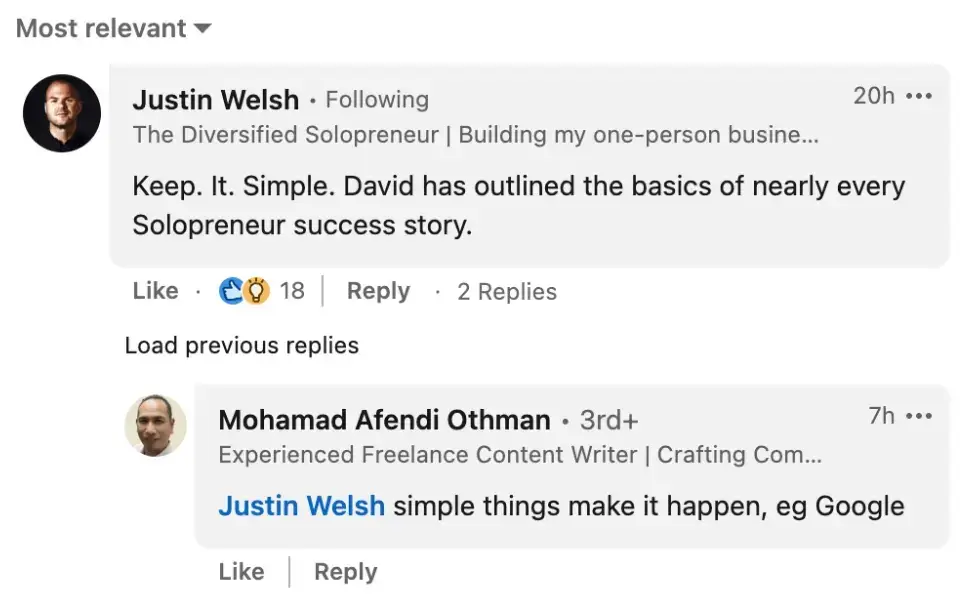
By following the industry discourse, you can keep track of popular topics and hashtags.
Your comments will help you stay relevant, build a loyal audience of engaged followers, and establish you as a thought leader in your industry.
5. Cross-Promotion and LinkedIn Ads
Social media wealth is transferable across channels, that is, you can grow your LinkedIn connections by leveraging your following on other social media platforms like Facebook, X (formerly Twitter), and Instagram.
Read more about Instagram content ideas.
You can also add your LinkedIn profile link to your email signature, website, and marketing material to drive traffic to your account.
Another way to boost reach and grow followers is through LinkedIn ads. They're costlier compared to Facebook and Instagram ads, but armed with a well-defined ICP, they can increase purchase intent by 33%.
Their highly targeted nature makes them perfect for soft-launching your business before your dream customers.
You can follow that up by finding their contact information and sending them a personalized cold email.
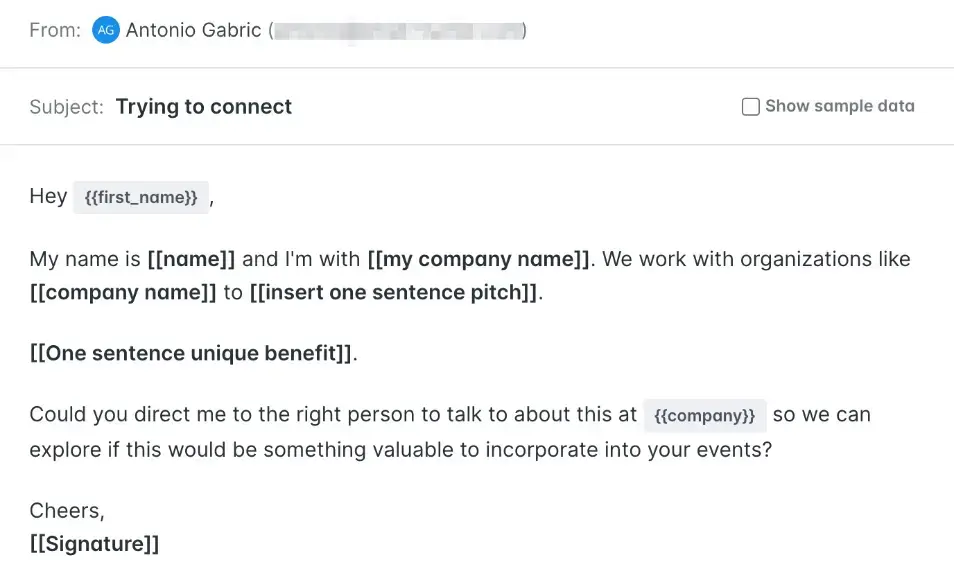
That way when you send them a connection request on LinkedIn, say, a week after your email, not only are they more likely to accept it because of their awareness of you, but the multiple touch points ensure they're warmed up to engage with you.
Also, using a LinkedIn email finder at the beginning of your outreach can significantly streamline this process and boost your chances of connection success.
6. Group Engagement and Collaboration with Influencers
LinkedIn has groups and clubs for networking. Joining a group in your niche will offer numerous benefits and support, but don't stop there. Look for groups in your ICP's niche and join and engage with them too.
For example, if you run an interior design firm, alongside joining an interior designer group, check out groups for local homeowners associations and apartment professionals.
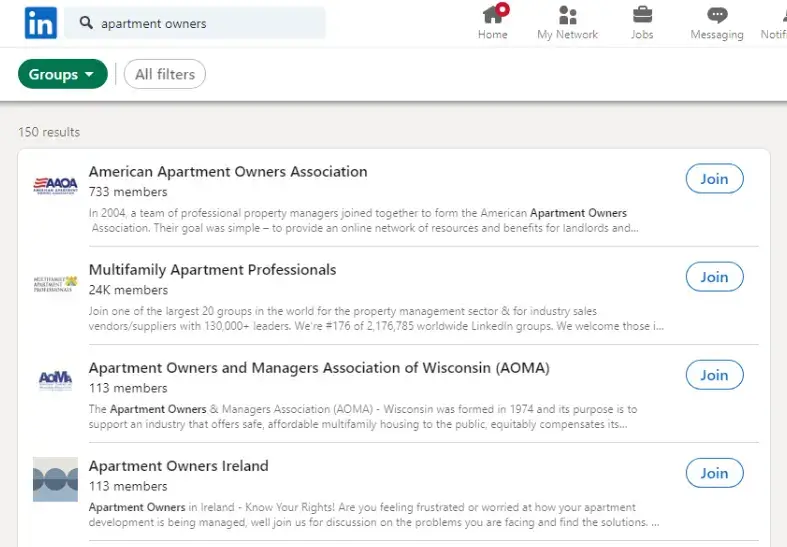
These groups often have strict rules barring promotional posts, so stick to offering help and advice on posts.
Showcase your experience by discreetly referencing client successes. "While redecorating a client's penthouse right here in Jersey City, we found…"
If you've struck up a conversation with a group member, you can try connecting with them. And if you want to grow visibility even faster, consider influencer marketing.
You can find influencers to partner with using the LinkedIn search feature. Look for keywords and hashtags associated with your industry and niche.
After you've shortlisted a few individuals, check whether the influencer is a good fit for the collab based on
- their location,
- the number of their followers,
- the kind of content they post, etc.
Send them a connection request and a message expressing your admiration for their work. Over the next few days or weeks, keep communication going via comments and DMs.
When you finally make your pitch to collaborate on a post, podcast, video, etc., lay down in clear terms, why you want to work with them, and what your expectations are about the outcome.
You might have to follow up a few times before getting a positive response, so don’t give up after one message.
7. Host Webinars and Events
Hosting webinars and virtual events is a powerful way to attract more LinkedIn followers.
- Promote Your Event on LinkedIn: Create an event page and share it with your network.
- Encourage Attendees to Connect: Include a CTA during the event asking attendees to follow you on LinkedIn.
- Post Event Recaps: Share highlights and key insights on your LinkedIn profile to engage non-attendees and increase your visibility.
-
Hosting an event
If you host an event, your prospects get to see and hear you, in real-time if it's a Live Event, and you get to demonstrate expertise in your domain.
The allure of the webinar could lie in the subject, the speaker, or the offered freebie. You can hike attendance rates by promoting the event using a sponsored post or an ad.
After the event, create an automated email cadence.
First, send out a thank you email asking for the attendees' permission to share the event slides and any other promised resources (e.g., a free ebook). Next, collect feedback using ratings or surveys.
In your subsequent emails, share the latest updates about industry trends, tips or tricks, or case studies relevant to the topic of the webinar or event.
Track their open and response rates for these emails.

And accordingly, draft a LinkedIn message to personally connect with them and continue the lead nurturing process.
-
Attending an event
You might not be ready to host a webinar or event just yet, but you can still use them to connect with ICPs. By signing up for an event, you can access the list of interested attendees.
Run them against your ICP requirements and reach out to the ones that fit over email or LinkedIn messages.
Use both your attendance at the event as an icebreaker to start a conversation, streamlining your approach to export LinkedIn event attendees for effective networking and lead generation.
8. Consistency is Key
LinkedIn has immense potential to get you organic traffic and engagement, but success on the platform doesn't manifest overnight. You'll need to draw up a content marketing plan that you can actually pull off.
To build a consistent LinkedIn presence and grow your followers, follow these steps:
- Post at least 3-5 times per week to stay visible.
- You can’t post every day for a couple of weeks and then run out of ideas for the next month.
- Have a consistent daily, bi-weekly, or weekly post schedule.
- Share a mix of industry insights, company updates, and thought leadership content.
- Respond to comments and engage with your audience regularly.
- Stick to a content calendar to maintain consistency.
- Monitor engagement metrics and adjust your content strategy accordingly.
If you publish a newsletter or have a podcast, plan episodes at least two months in advance.
Aim to create an episode bank that you can fall back on in case of disruptions. Sometimes, despite your best efforts, your content might not perform well. But don't take that as a sign to give up.
LinkedIn's algorithm, like any other, keeps evolving, and your reach and impact are bound to be affected.
But it doesn't change the fact that LinkedIn has more content consumers per creator vis-a-vis platforms like Facebook and Instagram and is, therefore, a highly viable means to find leads and nurture them.
So hold your content to the highest possible standard of quality. It will, in turn, determine the quality of your connections.
FAQ
1. How do I get more followers on LinkedIn fast?
Cross-promote your LinkedIn profile across your other social media platforms, email signature, and use LinkedIn Ads to reach targeted audiences.
2. What type of content attracts more LinkedIn followers?
Create content that resonates with your target audience, such as industry news, tips, and engaging visuals like infographics and videos.
3. Does having a complete LinkedIn profile increase followers?
Yes, optimizing your profile with a professional headshot, keyword-rich headline, and engaging summary helps attract more followers.
4. How important is consistency in posting on LinkedIn?
Consistency is key. Regular posting increases your visibility and helps establish authority, drawing more followers.
5. Can LinkedIn Groups help me gain more followers?
Yes, by actively engaging in LinkedIn groups relevant to your industry or target audience, you can build visibility and attract followers.
6. Should I use LinkedIn Ads to get more followers?
LinkedIn Ads are an effective way to target a specific audience and grow your followers quickly, especially for niche markets.
Wrapping Up
If you haven't already, now is the time to stop thinking of LinkedIn as yet another social media channel you're forced to maintain a presence on because that's what the competition is doing.
If you
- pay attention to who your audience is,
- create your profile with care,
- regularly churn out quality content,
- show interest in what others have to say,
- take a multi-channel approach,
- use ads, sponsored posts and influencers to amplify your reach,
- participate in groups, and
- host and attend educational events,
you’ll be able to unlock new opportunities and build a steady base of engaged, loyal prospects that can be easily converted into customers.
Start applying these strategies today to see how to get more LinkedIn followers and grow your professional network. Consistency and engagement are key to long-term success, so stay active and responsive to build lasting connections.
Author Bio
Antonio Gabrić is an outreach manager at Hunter. He is passionate about testing different outreach tactics and sharing results with the community. When he is not connecting with industry leaders you can find him on his motorbike exploring off-the-beaten paths around the world.



